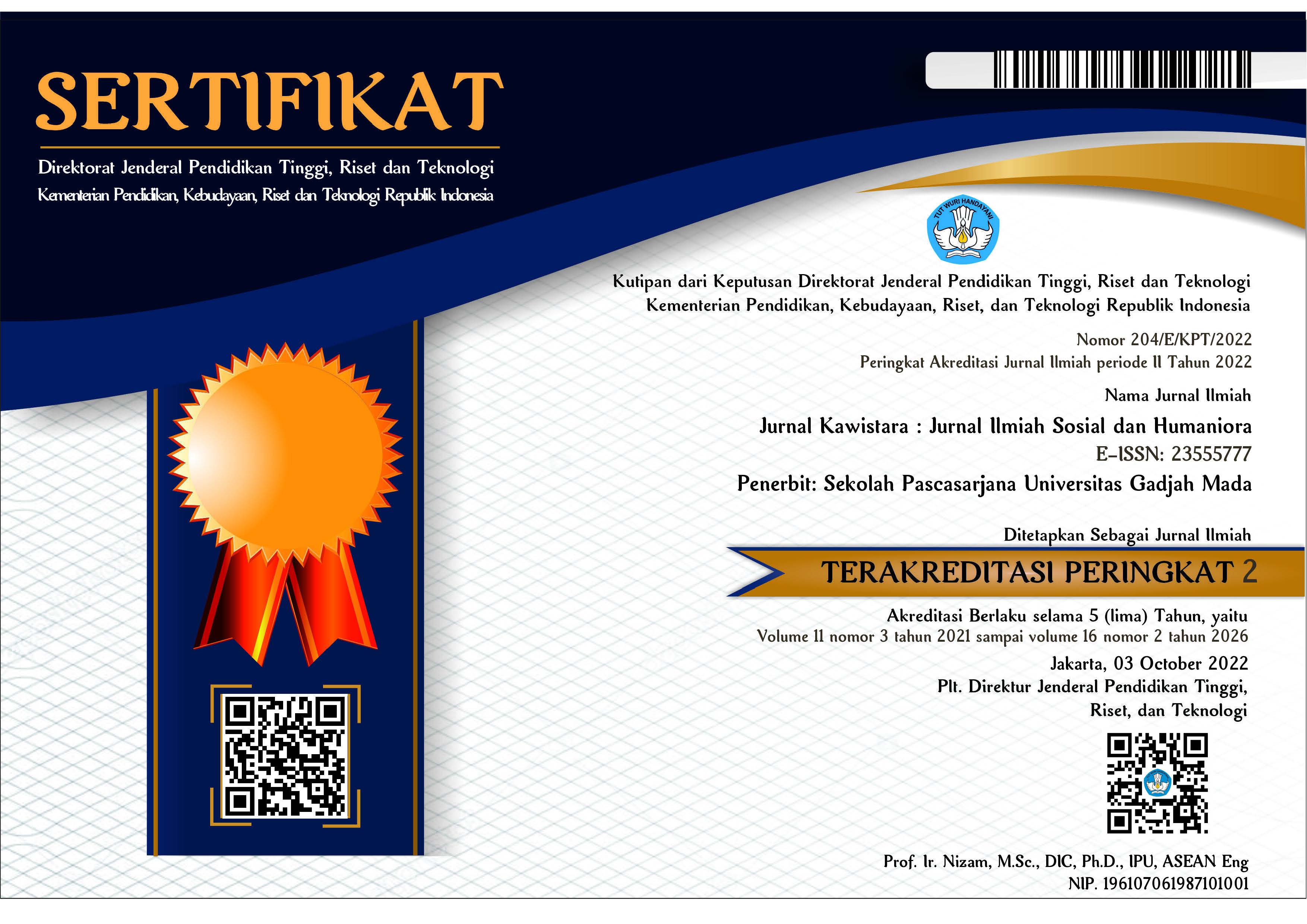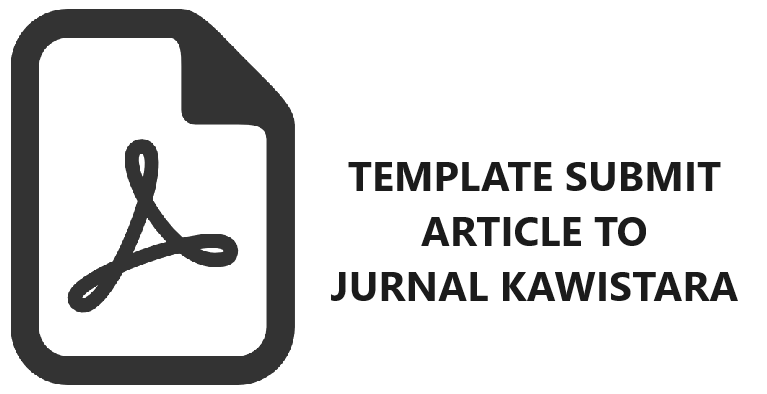Pengaruh Islam dan Eropa dalam Budaya Kuliner di Keraton Yogyakarta dan Surakarta Abad 19 dan 20 Masehi
Ajid Thohir(1*), Bambang Muhamad Fasya Azhara(2)
(1) Fakultas Adab dan Humaniora Universitas Islam Negeri Sunan Gunung Djati Bandung
(2) Fakultas Adab dan Humaniora Universitas Islam Negeri Sunan Gunung Djati Bandung
(*) Corresponding Author
Abstract
Islam and Europe are an integral part of the life of Keraton Yogyakarta and Surakarta, especially in the culinary culture of the keraton. This study aims to identify of the influence of Islam and Europe on culinary cultures at keraton yogyakarta and surkarta in the 19-20 centuries c.e., as well as the forms resulting from that influence. T he research methods used historical research methods, which refer to various sources categorized into primary and secondary sources. The p rimary sources include photo archives, newspapers, to invitation cards. As for secondary sources it is made up of books and articles. The results of this research identify what is h alal or lawful and haram or prohibited in the culinary culture. The keraton thus attempted to modify a variety of European dishes to be enjoyed without violating islamic teachings. As for the European influence, the rijsttafel, the orchestra, the ingredients used, to the use of a foreign language on the dinner table. Such European influence arose because of the process of interaction between Javanese nobles and europeans, the keraton attempted to imitate European customs.
Keywords
Full Text:
PDFReferences
Aan Siam’s Vorstenpaar te Jogja Komt. (1929, August 10). https://resolver.kb.nl/resolve?urn=MMKB23:001714102:mpeg21:p00009
Administrator. (2019). Selat Solo, Steak Eropa ala Jawa. Indonesia.Go.Id. https://indonesia.go.id/kategori/pariwisata/624/selat-solo-steak-eropa-ala-jawa
Ajid Thohir, D. (2019). FILSAFAT SEJARAH: Profetik, Spekulatif, dan Kritis. PRENADAMEDIA GROUP.
Ajid Thohir, D. (2021). The struggle of Freemasonry and Islamic ideology in the twentieth century during colonialization in Indonesia. Heliyon, 1–10. https://doi.org/https://doi.org/10.1016/j.heliyon.2021.e08237
Ali, M. (2016). Konsep Makanan Halal dalam Tinjauan Syariah dan Tanggung Jawab Produk atas Produsen Industri Halal. Ahkam, XVI, 291–306. https://doi.org/10.15408/ajis.v16i2.4459 Aneta. (1929, September 10). De Koning van Siam in Jogjakarta. https://resolver.kb.nl/resolve?urn=ddd:110569128:mpeg21:p010
Baqi, M. F. A. (2012). Al-Lu’lu’ wal Marjan: Diterjemahkan Oleh Ahmad Sunarto. PUSTAKA NUUN. Chandra. (2021). Kersanan Dalem. https://youtu.be/MPhkqgLY0NQ
Gardjito, M. (2021). State Banquet at The Sultanate of Yogyakarta.
Gottschalk, L. (2015). Mengerti Sejarah. UI Press. Het Kratonfeest te Jogja. Jogja, 6 Maart. (1921, March 15). De Sumatra Post. https://resolver.kb.nl/resolve?urn=ddd:010383222:mpeg21:p005
Kartika, Di. S. (2018). Pengaruh Kebudayaan Indis di Surakarta Tahun 1904-1942 (Studi Kasus Budaya Kuliner Rijsttafel). Sebelas Maret Surakarta.
Kuntowijoyo. (2018). Pengantar Ilmu Sejarah. Tiara Wacana.
Lombard, D. (2005). Nusa Jawa: Silang Budaya (Batas-Batas Pembaratan). PT. Gramedia Pustaka Utama.
Margana, S. (2010). KRATON SURAKARTA DAN YOGYAKARTA 1769-1874. PUSTAKA PELAJAR.
Mas’as, Ayu Amalya, D. (2020). Diplomasi Kebudayaan antara Keraton Yogyakarta dan Pemerintah Kolonial Belanda pada Masa Pemerintahan Sultan Hamengku Buwana VIII, 1921-1939. Historiografi, 1(2), 143–152.
Muchtadi, T. R. (2019). Ilmu Pengetahuan Bahan Pangan. ALFABETA.
Noor Sulistyo, D. (1996). Tradisi Makan dan Minum Lingkungan Kraton Yogyakarta. DEPARTEMEN PENDIDIKAN DAN KEBUDAYAAN DIREKTORAT JENDERAL KEBUDAYAAN DIREKTORAT SEJARAH DAN NILAI TRADISIONAL BAGIAN PROYEK PENGKAJIAN DAN PEMBINAAN NILAI-NILAI BUDAYA DAERAH ISTEMEWA YOGYAKARTA.
Rahman, F. (2011). Rijsttafel: Budaya Kuliner di Indonesia Masa Kolonial 1870-1942. PT. Gramedia Pustaka Utama.
Rustopo. (2007). MENJADI JAWA: Orang-Orang Tionghoa dan Kebudayaan Jawa di Surakarta 1855-1998. Ombak.
Setiawan, F. (2014). Konsep Maslahah (Utility) dalam al-Qur’an Surat al-Baqarah ayat 168 dan Surat al-A’raf ayat 31. Dinar, 1(2). https://doi.org/10.21107/dinar.v1i2.2725 Sjamsuddin, H. (2020). Metodelogi Sejarah (V). Penerbit Ombak.
Soekiman, D. (2014). KEBUDAYAAN INDIS: Dari Zaman Kompeni sampai Revolusi (2nd ed.). Komunitas Bambu. Sulasman. (2014). Metodelogi Penelitian Sejarah. CV. PUSTAKA
SETIA. Umar, N. (2019). ISLAM NUSANTARA: Jalan Panjang Moderasi Beragama di Indonesia. PT. Elex Media Komputindo.
Wijanarko, F. (2021). PISTHA AGENG: Perubahan Pola Jamuan Bangsawan Yogyakarta Tahun 1855-1939. Prajnaparmita, 10(1), 41–57. https://doi.org/10.54519/prj.v10i1.36 Windyastika, L. (2020). Menjadi “Eropa” di Meja Makan: Rijsttafel dan Gaya Hidup Elite Jawa di Vorstenlanden 1900-1942. Universitas Sanata Dharma.
Article Metrics
Refbacks
Copyright (c) 2022 Ajid Thohir; Bambang Muhamad Fasya Azhara

This work is licensed under a Creative Commons Attribution-ShareAlike 4.0 International License.
Jurnal Kawistara is published by the Graduate School, Universitas Gadjah Mada.











